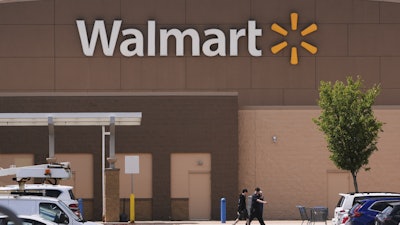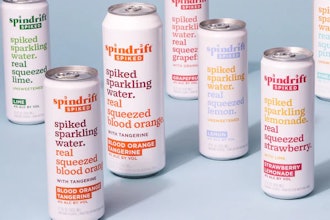
NEW YORK (AP) — Walmart Inc. reported increases in second-quarter profits and sales Thursday as it pulls in shoppers seeking low prices for groceries and other essentials to offset worries that new U.S. tariffs may make a variety of goods more expensive.
The nation’s largest retailer also increased its annual profit and sales outlook. Quarterly results from Walmart and other major U.S. retailers this week offer clues on how consumers are reacting to the possibility of tariff-related price increases.
The company, based in Bentonville, Arkansas, said it earned $7.03 billion, or 88 cents per share, for the three-month period that ended July 31. That compares with $4.50 billion, or 56 cents per share, a year ago.
Sales rose nearly 5% to $177.4 billion.
A growing list of companies, including Procter & Gamble, E.lf. Cosmetics, Black & Decker and Ralph Lauren, told investors in recent weeks that they planned to or already had raised prices because of tariffs, though modestly.
None of that has derailed consumer spending. Shoppers spent at a healthy pace in July, particularly at the nation’s auto dealerships, as signs emerged that President Donald Trump’s trade policies were taking a toll on jobs.
Some of that spending may have been shoppers buying furniture and other imported items to get ahead of expected price increases, analysts said.
On Tuesday, Home Depot, the nation’s largest home improvement retailer, reported improved sales during its latest quarter as consumers remained focused on smaller projects. Like Walmart, Home Depot's performance missed Wall Street’s expectations.
The Atlanta-based company also said shoppers should expect modest price increases in some categories as a result of additional costs from tariffs, which are taxes on imports.
Target, which has been struggling to reverse a persistent sales malaise, reported another quarterly decline in comparable sales and said Wednesday that it would only raise prices as a last resort. Chief Commercial Officer Rick Gomez said shoppers are looking for value and so the discounter would focus more on its store label brands, which tend to be less expensive than national labels.
But it’s Walmart that serves as a barometer of spending given its outsized power in American retailing. The company maintains that 90% of U.S. households rely on Walmart for a range of products, and more than 150 million customers shop on its website or in its stores every week.
Walmart said in May that prices had started to increase in late April and got higher in May. But it said Thursday that it had introduced 7,400 price rollbacks, or temporary discounts, across the aisles in the latest quarter.
Walmart’s U.S. comparable sales — those from established physical stores and online channels — rose 4.6% in the quarter, slightly higher than the 4.5% gain in the fiscal first quarter. Groceries and health and wellness items fueled the growth, the company said., the company said.
Global e-commerce sales rose 25%, above the 22% growth in the fiscal first quarter.
Despite Walmart’s solid quarter, its stock price was down more than 2% early Thursday as its earnings per share came in below what analysts had expected. Analysts were expecting 73 cents per share on sales of $175.93 billion for the quarter, according to FactSet.
Per share results, excluding effects of charges related to certain legal matters and from business restructuring, was 68 cents, Walmart said.
The company said Thursday it expects earnings per share to be in the range of 58 cents to 60 cents for the current quarter. Analysts expect 57 cents per share, according to FactSet.
For the year, Walmart raised its per-share estimates to a range of $2.52 to $2.62, up from a previous estimate of a $2.50 to $2.60 range. It said 2025 sales are anticipated to increase 3.75% to 4.75%, more than it projected in May.






















